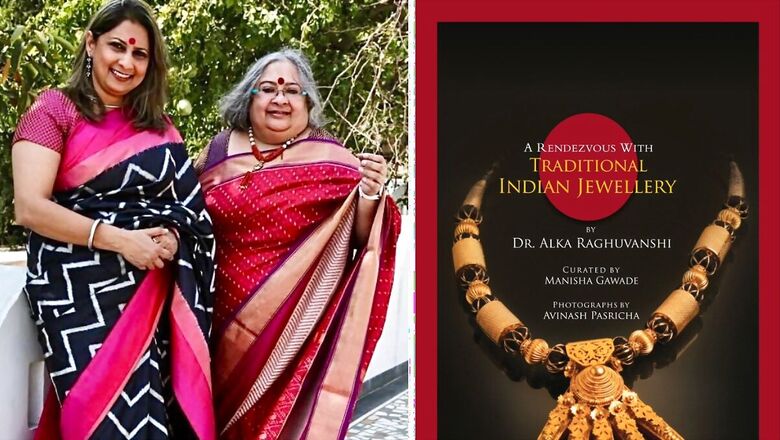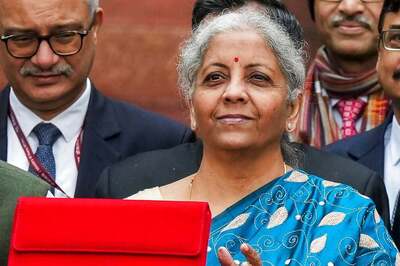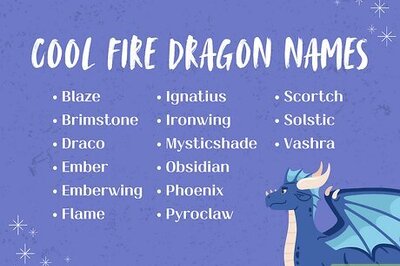Manisha Gawade Unveils 'A Rendezvous with Indian Traditional Jewellery' by Late Dr. Alka Raghuvanshi

views
Ehaaas and Shubhi Publications presented the book launch of Dr. Alka Raghuvanshi’s last written book, “A Rendezvous With Traditional Indian Jewellery” on the occasion of her 63rd birth anniversary. The book is curated by Manisha Gawade and photographed by Avinash Pasricha.
The book gives an overview of the main styles of traditional gold and silver jewellery in their regional variations, inspirational and aspirational journeys.
It is a peek via the female gaze into the intriguing world of the feminine through the microcosm of ritual, marital and fertility symbols, the caste hierarchies, the oneness with nature, the economics of an agrarian society and the sheer perfection of craftsmanship. And yet while the consumers and to an extent designers may have been women, the creators of most jewellery still continue to be men.
In this sense perhaps this book is different from most others on this subject – for it delves into the entire nature-inspired concept of design from the point of the traditional Indian mindset, the socio-economic, marital and fertility related, the magico-religious-iconic connotations and manifestations and the main forms – kundan, jadau, meenakari and south Indian temple jewellery. The most important publicly accessible collections of the Nizam of Hyderabad and the National Museum find place as they are the most important repositories of our historical legacy. And yet it makes no claim to being the last word -especially in the Indian context where tradition is perceived as a flowing river – ever changing, ever expanding, ever intensifying to enfold and nestle the incredible variations within its affectionate embrace. In a candid chat with Gawade, we understand about the origins of the books and its connection with Natya Shastra.
Q1. What is the journey of classical dance with jewellery in Natya Shastra as per this book?
Ans. Natya Shastra dictates that ornaments add beauty to the performer when worn in the right proportion in specified places on the body. It advises against piling of jewels, especially for dancers, as the weight of heavy jewellery could tire the dancer and hinder the free movement of the limbs while performing. Thus, lightweight lac-filled gold ornaments can be used in dramatic The journey of classical dance with jewellery by Manisha Gawade It dictates that ornaments add beauty to the performer when worn in the right proportion in specified places on the body. It advises against piling of jewels, especially for dancers, as the weight of heavy jewellery could tire the dancer and hinder the free movement of the limbs while performing. Thus, lightweight lac-filled gold ornaments can be used in dramatic productions instead of pure Gold ornaments.
Q2. Dr. Raghuvanshi says in the book that a lot of jewellery is inspired by nature in the Indian context. Is that true?
Ans. The rural background provides Indian jewellery with its essential dynamism for being agriculture or forest inspired creation, the ornamentation is also inspired by nature. Look closely and it will be amply clear as to where these designs are coming from – at once a part of you as a larger part of the cosmos. Flowers, seeds, fruits, fish, all translated and immortalised into metal – so much so that a popular design of earring is even called a karnphool or flower for the ear, as it sits in the pieces. They become ritual objects with magical qualities.
Natural objects themselves, metals are associated with mighty rivers for instance, silver is not only seen as an embodiment of the moon but also the river Yamuna, who in turn is supposed to be the sister of Lord Yama, the God of Death. Likewise, the purest of metals, gold, is supposed to be akin to the river Ganga. Likewise copper for cost, aesthetic and medicinal factors is the metal used among certain tribal communities.
Q3. How were the jewels from Awadh connected to the Mughals as per the author?
Ans. As for the designs, centuries of Mughal rule have ensured the popularity of floral patterns, that continue to rule the roost. It begins from the head ornaments of both men and women. For the men it are the turban aigrette which became fashionable in India as far back as the creator of the Taj Mahal, the Mughal emperor Shah Jahan’s time, when many a paintings depict him as holding an aigrette in the form of a floral spray.
Turban decoration in the 16th century and early 17th century were in the form of feather plumes held in place by jeweled brooches.While today these aigrettes are not in use except in a handful of families on ceremonial occasions like weddings, some of the old surviving pieces are in emerald and white jade and of course pale pink rubies. Another male ornament is the sarpech, which is a Persian word for a band encircling the turban. Its use too started in the Mughal period.
Initially it may have been a gem-set head band, which later developed to becoming an integral part of the turban ornament of the kings, princes and men of high status.A sarpech usually consists of two or three pieces, one is the sir-patti or forehead band, the other is the plume and the third is the jigha or central piece.Three tassels are provided to tie the sarpech on the turban and while a number of kundan sarpechs still survive, few jadau pieces in emeralds and pearls are still in the possession of some old Rajput families.
Incidentally, new sarpechs were made for ceremonial occasions like coronations and weddings as sarpeches of dead rulers were usually given away to close and not-well-off relatives.
Q4. How does the book connect Kundan jewellery with the kings?
Ans. In earlier times when jewelry was caste specific, the kshatriyas would invariably opt for and sport kundan and jadau jewelry. The kshatriyas or the warriors, were able to retain only jewels that would not fetch very much in the resale market as their economic situation kept getting worse. But then grandeur is very aspirational.
With the average Indian aspiring to play King – even a fake one at his own wedding and wanting to dress the part, kundan jewellery has staged a major come back in the late 90s. Interestingly, this time round it is not the fake stones almost equivalent to pieces of glass, but real polki or uncut precious and semi-precious stones that have seen a resurgence. It is a very interesting journey. From the old pieces it is evident that real stones were used in kundan pieces, but the pieces from the post-independence period have only glass inset in them.And now again precious stones are being used in kundan.This renders it almost totally resalable.
Even if resale was not an issue, the fact remains that kundan is easily the most dramatic way of setting stones.The method, even if simple, requires a high level of competence and craftsmanship. In this technique, the cases for placing the stones are made from gold sheet.Then the grooves are filled with lac after which a thin base or foil is added. Sometimes different coloured foil is used to show the brightness of the colours of the respective stones – red foil is used with rubies, green with emeralds and silver foil or mica with diamonds. Lastly a band or border of highly purified gold is traced around the stone to keep it in place.
One rather interesting fact about most kundan pieces is that they are made in pieces and then strung together with either gold wire, or with a stout thread in such a seamless manner that it is not possible for the lay person to even hazard a guess that they may not be a single piece but pieces of a larger whole.
Q5. Can you tell us a little about what Dr. Raghuvanshi says about the Nizam’s collection in the book?
Ans. Jewellery of royalty is a subject that has inspired many a bard! Ballads have been sung and lore has been woven. On the flip side, it has inspired many a palace intrigue as well.Wars have been fought and good and bad luck attributed to stones.
Yet few have actually seen royal jewels at close quarters. Years ago, she remembers standing in front of the crown jewels in the Tower of London, with tears streaming down her face in patriotic agony as she tried to peer at our the Kohinoor despite being hustled by the burly guard to move on. Unlike the crown jewels of Russian and European royalty, which have been chronicled and studied, the jewels of Indian Maharajas have remained locked in the treasuries of their principalities, seen only by a privileged few, or surfacing in distress sales abroad and occasionally in India. And when the Nizam of Hyderabad’s jewellery collection – rumoured to be one of the most stunning – was offered for sale to the Government of India in 1972, it created massive ripples.
For it was for the first time in the history of India that the jewellery collection of any principality was offered for sale to the Government. After nearly 23 years of protracted negotiations and prolonged drama, the jewels, assumed to be only a fraction of the original treasure, were finally acquired in 1995.
Q6. Tell us about the author
Ans. About the Author Dr. Alka Raghuvanshi’s writing career in arts spanned nearly 35 years, she documented an entire generation of artistes and artists who shaped the artistic heritage of the country in the last quarter of the century – captured in two books written by Dr. Raghuvanshi – A Moment in Time with Legends of Indian Arts and Pathfinders -artistes of one world. She authored and edited over 28 books including, Garhwal Himalayas-Chorus of Solitude, Indian Jewels-for a queen’s ransom.
As series editor and initiator of the seven-part series Classical Dances of India with one book for each classical dance form written by top performers of the seven forms. She commissioned, edited and curated the visuals of the books. She commissioned and edited Smoking Beauties, a first-ever Indian publication on the heritage of steam engines in the country. A senior columnist and author, she was on the editorial teams of the Indian Express, the Times of India and the BBC, where she consistently wrote to cover literature and the entire spectrum of the arts including dance, music, theatre, painting and crafts. As editor of Swagat she redesigned and re-launched the magazine to take into account the changed arts scenario in terms of design and coverage.
For the first time in the history of journalism – a feat that has not been repeated since – she was able to run an arts page everyday for half a decade as the arts editor of the Pioneer. The page was a judicious mix of informed articles which treated the arts as part of hard news spectrum and fearless reviews, covering the arts globally. She launched Pioneerarts.com, the first of its kind website on the performing and visual arts way back in 1999.
She was India’s first trained art curator, trained at the Goldsmiths College, London and the Museum of Modern Art in Oxford.She curated and designed major exhibitions and written detailed catalogues and many of which travelled to other parts of the country and the world as well. All the exhibitions were marked by an amazing interplay of indigenous design and their contemporary connect.
Q7. How did Ehsaas come into being, since it is this organisation which has brought this book to the readers.
Ans. About Ehsaas Ehsaas was started as an important initiative in 2012 founded by two sisters, Dr. Alka Raghuvanshi and Manisha Gawade, who had only one single aim, which was to bring all the combined arts – dance, music, theatre, painting, sculptures and weaving together on one single platform.
Ehsaas has played an important role in the lives of the artists and artisans ever since and saved many struggling artists and weavers from the remotest of villages of India giving them a bigger market and exposure in India and the world over. It has been a huge victory for Ehsaas to make art wearable and usable, with the first ever and largest wearable installation bringing together the finest names in the country on one single stage through various exhibitions. And ever since Dr. Raghuvanshi’s demise, her sister Manisha Gawade has pledged to continue this work forward.
Both the sisters who have been journalists, curators and artists, have been widely written about and celebrated by the international media for many decades through their constant and dedicated art journey creating ripples for their pioneering work.



















Comments
0 comment